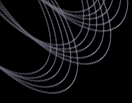
| Home |
| Where to Start |
| News and Updates |
| Tutorials |
| Data Products |
| Data Access |
| Sky Coverage |
| Instruments |
| Data Flow |
| Algorithms |
| Glossary |
| Help and Feedback |
| Search |
 |
Description of mask csv filesThe masks are originally output as csv files, which are simple ascii files with comma-separated columns. The mask csv files are then loaded into the DR1 Catalog Archive Server, which will be the best means of accessing and using the imaging masks. However, here we also give a brief description of the mask csv files, as they are also available to download and use. The mask csv's are available from the web, under the DR1 root imaging directories for the target and best reruns. The csv files are located in the "stripe*/mask" subdirectories, and are named "mask-$run-$camcol.csv", i.e. one file for each of the 6 camera columns of each imaging run. The format of the csv files is detailed on the SDSS data model page, in the entry for sqlMask. As mentioned before, the masks are in the form of convex polygons, and the RA and DEC coordinates of the vertices of each mask are given in the "area" column, which consists of the list of vertex coordinates enclosed in quotes. Alternatively, each mask may also be more roughly approximated by the bounding circle, whose center is given by the "ra" and "dec" columns, and whose radius by the "radius" column. The polygon masks have been truncated as needed to the PRIMARY survey area for each survey field/filter (but note the bounding circles have not been). So for a given filter, the masks will not overlap between different survey fields. This does not hold true for masks from different filters, because of details in the filter-dependent astrometric solutions. Moreover, note that within a given field and filter, masks of the same type should not overlap each other, but masks of different types may. Hence one may need to resolve such overlaps when combining masks of different types (such as BRIGHT_STAR and BLEEDING), for example, if one wants to compute the total masked area. For those who are unfamiliar with convex polygons and their related computational algorithms, one resource is J. Gosper's M.Sc. thesis . In particular, the description of 2D convex hull algorithms may be useful for merging overlapping masks (i.e. by finding the convex hull which includes all the masks to be merged). Also, the section on theory provides descriptions of useful algorithms for finding the area of a convex polygon and for determining whether a given point lies within a particular convex polygon. Details about the mask creation can be found in the algorithms page on masks. Last modified: Fri Jun 27 13:23:13 CDT 2003 |